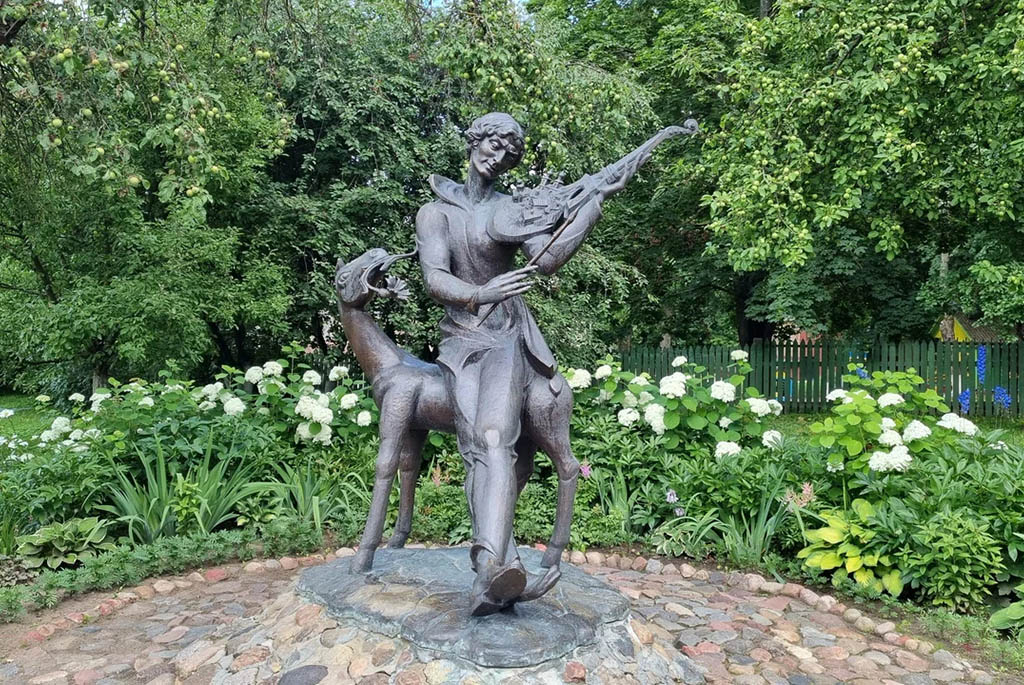Here he was born, received his primary art education, spent his young years. This city became the cradle of the artist's creative endeavors, where Chagall took the first steps towards his unique artistic journey.
For many years, Vitebsk remained an inexhaustible source of inspiration for the great artist. In honor of the world-renowned native, the Marc Chagall Museum was opened – a cultural space dedicated to the life and work of the prominent avant-garde artist. The museum was established with the aim of preserving and promoting the master's legacy. It consists of two sections:
- The Memorial House-Museum, located at 11 Pokrovskaya Street, near the railway station.
- The Art Center, which is located on the left bank of the Western Dvina at st. Putna, 2.
Marc Chagall's House-Museum
The Memorial House-Museum is situated in the house that once belonged to the artist's parents, witnessing his childhood and adolescent years. The building miraculously survived during the Great Patriotic War. The opening of the museum was timed to the 110th anniversary of the master’s birth. Inside, the ambiance of the turn of the 19th and 20th centuries has been carefully recreated, based on Chagall's paintings and writings. The museum transports visitors to a time when the artistic vision of young Chagall was just beginning to take shape.
The House-Museum consists of five rooms:
- "Grocery Store" – once the place where Chagall's mother sold groceries. Now, in this spot, visitors can purchase souvenirs, books, magnets, and postcards featuring the artist's paintings.
- Boys' Room – representing the room of Marc Chagall and his brother David.
- "Living Room" – showcasing a typical Jewish home interior from the end of the 19th century.
- "Red Room", named for its predominant red and burgundy tones in its interior design.
- "Kitchen" – a space where the artist's mother managed household chores.
Exhibits in the museum rooms feature:
- Archival documents;
- Family photos;
- Early works of the artist;
- Personal belongings of Chagall and his family;
- Everyday and interior items – here one can see antique lamps, pre-revolutionary clocks, furniture, a "Singer" sewing machine, scales, samovars, and other kitchenware. Some items belonged to members of the Chagall family.
M. Chagall Art Center
The Art Center is housed in a 19th-century brick building, depicted in the famous painting "Over the City". It holds around 300 original works by Chagall. The collection includes color lithographs, woodcuts, etchings, aquatints, as well as copies of famous paintings. The Art Center's collection was amassed thanks to the artist's descendants, patrons, and private collectors. It's not possible to display all the works at once, so the exhibitions are refreshed every few months.
Besides Chagall's pieces, the museum also showcases graphic artworks by European avant-garde artists – such as J. Miró, P. Picasso, A. Matisse, and others.
In 2002, a research library was opened in the Art Center, collecting books in various languages about Chagall and art in general. The library's collection includes rare editions, attracting Chagall researchers from all over the world to Vitebsk.
The museum regularly hosts exhibitions, creative meetings, lectures, concerts, literary readings, plein air sessions, and other cultural events. If you visit Vitebsk, don't miss the opportunity to immerse yourself in the legacy of our great fellow countryman and dive into the mesmerizing world of Chagall's colors, shapes, and expressive means.





